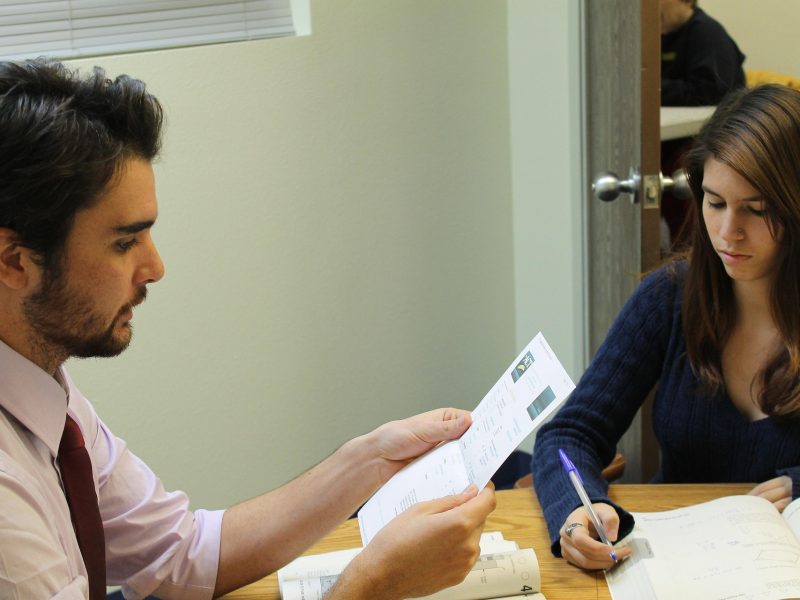Technology is rapidly reshaping the educational landscape, and boarding schools are no exception. From interactive whiteboards and online learning platforms to sophisticated administrative systems and emerging artificial intelligence (AI) applications, technology integration in boarding schools is transforming teaching, learning, and campus life.
For parents considering a boarding environment, understanding how a school leverages technology is increasingly important. For teachers, adapting to and utilizing new EdTech tools is becoming essential for effective pedagogy. How are boarding schools harnessing the power of AI and educational technology (EdTech) to enhance the student experience and prepare them for a digital future? This post will explore the evolving role of technology in boarding schools, examining current trends, innovative applications, and the benefits and challenges for students, parents, and educators.
Enhancing Teaching and Learning in the Classroom
One of the most visible impacts of EdTech in boarding schools is within the classroom itself. Technology offers powerful tools to make learning more engaging, personalized, and effective. Interactive whiteboards or smartboards allow teachers to present dynamic multimedia content, facilitate collaborative problem-solving, and save lesson notes digitally. Learning Management Systems (LMS) like Canvas, Blackboard, or Google Classroom serve as central hubs for course materials, assignments, grades, and communication between teachers, students, and even parents.
Digital resources, including online textbooks, educational apps, simulation software, and access to vast online research databases, supplement traditional learning materials. This allows for differentiated instruction, catering to diverse learning styles and paces. Students can engage with material in multiple formats, conduct in-depth research, and collaborate on projects using cloud-based tools. Furthermore, technology enables innovative pedagogical approaches like flipped classrooms (where students watch lectures online and use class time for discussion and activities) or project-based learning that incorporates digital creation tools (video editing, coding, graphic design). As sources like Kent State Online discuss regarding AI in teaching, technology can free up teacher time from routine tasks, allowing more focus on personalized student interaction and higher-order thinking skills.
The Rise of AI in Boarding School Education
Artificial Intelligence (AI) represents the next frontier in educational technology, and its integration into boarding schools is beginning to take shape, offering potential benefits across various domains. While still evolving, AI in education holds promise for personalization, efficiency, and new learning possibilities.
- Personalized Learning Paths: AI algorithms can analyze student performance data to identify strengths and weaknesses, suggesting customized learning resources, practice exercises, or enrichment activities. AI-powered tutors or chatbots can provide instant feedback on assignments or answer common questions, offering support outside of teacher availability.
- Teacher Assistance: AI can automate administrative tasks like grading multiple-choice assessments, managing schedules, or even generating initial drafts of lesson plans or reports, freeing up educators to focus on teaching and student relationships. AI tools can also help teachers identify students who might be struggling or require additional support.
- Enhanced Content Delivery: AI can help curate relevant educational content, create interactive learning modules, or even power virtual reality (VR) or augmented reality (AR) experiences that make abstract concepts more tangible (e.g., virtual science labs, historical reconstructions).
- Accessibility: AI-powered tools like speech-to-text, text-to-speech, and translation services can provide crucial support for students with learning disabilities or those for whom English is a second language.
While excitement surrounds AI, schools are also proceeding cautiously, considering ethical implications, data privacy concerns, and the irreplaceable value of human interaction and critical thinking, as noted in discussions by organizations like Pear Deck.
Streamlining Communication and Operations
Beyond the classroom, technology plays a vital role in the smooth operation of a boarding school and in maintaining strong communication channels. School management systems integrate various administrative functions, including admissions, enrollment, billing, scheduling, and student records. This improves efficiency and provides a centralized data source.
Communication platforms are essential for connecting the entire school community. Secure parent portals allow families to access grades, attendance records, school announcements, and communicate directly with teachers and administrators, bridging the geographical distance inherent in boarding. Student portals provide access to schedules, assignments, and campus resources. Many schools utilize dedicated apps or communication systems (like Orah, mentioned in safety research) for managing student leave requests, tracking whereabouts, and facilitating communication between students, dorm parents, and administrators, enhancing safety and accountability.
Tools like video conferencing facilitate parent-teacher conferences for families unable to visit campus frequently. School websites, social media channels, and email newsletters keep parents informed about campus events, student achievements, and important updates, fostering a sense of connection and community despite the distance.
Preparing Students for a Digital Future
Integrating technology throughout the boarding school experience serves another critical purpose: preparing students for a future where digital literacy is non-negotiable. By using various software platforms, online research tools, digital communication methods, and potentially AI-driven applications, students develop essential 21st-century skills (read about other Skills Students Gain at Boarding School).
They learn to navigate digital environments responsibly, evaluate online information critically, collaborate using digital tools, and understand the basics of cybersecurity and digital citizenship. Many boarding schools offer specific courses in computer science, coding, digital media, or robotics, further enhancing technical skills. The expectation that students will manage their assignments, schedules, and communication through digital platforms mirrors the demands of university and the modern workplace. This hands-on, integrated approach ensures that graduates are not just academically prepared but also technologically adept and ready to thrive in an increasingly digital world.
Challenges and Considerations
Despite the numerous benefits, technology integration in boarding schools is not without challenges. Ensuring equitable access to devices and reliable internet connectivity for all students is fundamental. Providing adequate professional development for teachers to effectively utilize new tools and pedagogical approaches is crucial for successful implementation. Concerns about data privacy and security, particularly with AI and cloud-based systems, must be addressed proactively through robust policies and transparent practices.
Perhaps the most significant challenge is maintaining a healthy balance. While technology offers powerful tools, educators and parents worry about excessive screen time, potential distractions, the erosion of face-to-face communication skills, and the ethical use of AI. Boarding schools must thoughtfully integrate technology as a tool to enhance learning and community, not as a replacement for meaningful human interaction, critical thinking, and real-world experiences. Policies around device usage, digital citizenship education, and promoting offline activities are essential components of a balanced approach.
Conclusion: Embracing Technology Thoughtfully
Technology, including EdTech and emerging AI, is undeniably playing an increasingly significant role in the modern boarding school. From enhancing classroom engagement and personalizing learning pathways to streamlining campus operations and fostering essential digital literacy skills, boarding school technology offers powerful potential to enrich the educational experience.
Schools are actively exploring and integrating these tools to provide dynamic learning environments and prepare students effectively for college and beyond.
For parents and teachers, it’s important to look beyond the mere presence of technology and inquire about how it is being used. Thoughtful integration focuses on enhancing pedagogy, supporting student well-being, fostering critical skills, and maintaining a healthy balance with traditional learning methods and human connection. By embracing technology strategically and ethically, boarding schools can leverage its power to further their mission of developing knowledgeable, adaptable, and well-rounded individuals ready for the complexities of the 21st century.






